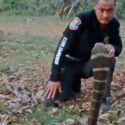It’s the middle of the night, and you hear a squeaking sound coming from your attic. You get up to investigate, and as soon as you pull the attic ladder down, a swarm of winged-rodents come flying out at you. There are too many of them to count, and the only physical feature you can make out is their sharp teeth. What should you do next?
Bats are essential to the ecosystem. They pollinate many nocturnal plants and eat tons of insects that could ravish the flora, making them a natural form of pest control. But that doesn’t mean that you should let them live in your home. Every fall, bats start looking for a new home to hibernate in for the winter. And what better place for them to set up shop than in the comfort of your house?
Not only does it provide the dark, humid shelter of your attic, but it also offers convenient access to your food and water. You might not know it, but bats could be setting up a colony in your attic right now. And if you don’t stop them soon, you could end up with about 500 of these flying critters up there. How could bats get into your home? What diseases can they transmit to you? Why can turning a light on can help you get rid of the infestation?
Step 1. Seal your house
Bats can squeeze to fit through small openings about the size of a dime. But they can’t create holes by themselves, so they can’t poke their way into your house. But they will enter through an existing hole.
Since your attic is a dark and humid space, it can provide an ideal shelter for bats to roost.
In February 2021, about 386 bats were discovered at a curling rink in Saskatchewan, Canada. The colony was hibernating, and may have entered through a hole the size of a fingertip. To prevent bats from infesting your home, you should start by checking your attic for holes. Pay special attention to gaps where materials join.
Step 2: Save Your Money
In 2016, Barb Humby’s home in Newfoundland & Labrador, Canada, became a house of horrors when she found hundreds of bats living in her attic. They had been breeding there for a while, so their colony was well established. The estimated cost of a professional exterminator was almost $12,000 U.S. And since Barb didn’t have that much money, she decided to take matters into her own hands.
First, she identified the entry points in her house and sealed them. Each night she opened them so the bats could get out to enjoy their nocturnal activities. And she closed the entry points before dawn, so they couldn’t come back in. It took almost a week, but Barb got rid of the infestation.
Step 3. Get a shot
Usually, bats are shy and gentle critters who don’t seek contact with humans. So if you encounter a bat that’s acting boldly and flying towards you, its behavior could suggest that the bat has rabies. Rabies is a viral disease that can alter its host’s behavior, making it highly aggressive and dangerous. And you could get rabies from an infected bat’s bite or scratch. If a bat attacks you, don’t wait. Seek immediate medical treatment, and ask to be given the rabies shot right away.
Step 4. Turn the lights on
If you discover bats infesting your house, you should consider using a light in the area where the bats are.
Bats are active at night. And during the day, they prefer to sleep where there aren’t any lights. So if you light the infested area, there’s a good chance that they’ll leave and find another place.
Step 5: Wear a Mask
After the bat colony has left your home, the next step is to get rid of the droppings and urine they left behind. But you’ll need to wear protective gear to handle this cleaning job.You can get fungal diseases like histoplasmosis by inhaling bat manure, which can be life-threatening for people with compromised immune systems and children. The symptoms include fever, muscle aches and dry cough. So wear long-sleeved clothing, rubber gloves and an N95 mask.
Then, spray a water-bleach solution to kill any bacteria suspended in the air. To clean the floor and walls, scrub thoroughly with soap or detergent and rinse with clean water. Well done, you survived a bat infestation, and you shouldn’t have to worry about them again. But maybe they weren’t so bad after all, because ever since they’ve been gone, there have been a lot more pesky bugs around, like mosquitoes.
And they’ve been known to kill a lot more people than bats do. So how should you protect yourself?
Sources
- “‘Swarming’ Behavior In Southeast Bats, Alaska Department Of Fish And Game“. 2021. Adfg.Alaska.Gov.
- “What Seeing Bats Around Your Home Could Mean | Preventive Pest Control“. 2016. Preventive Pest Control.
- “15 Tips On How To Get Rid Of Bats Fast [Humanely] – World Birds“. 2020. World Birds.
- “Roosts In Trees – Bat Roosts – Bat Conservation Trust“. Trust, Bat. 2021. Bat Conservation Trust.
- “How To Remove Bats: What Diseases Do Bats Carry?”. 2021. Animalcontrol-Experts.Com.
- “The Night Life: Why We Need Bats All The Time–Not Just On Halloween“. 2021. Nsf.Gov.



























